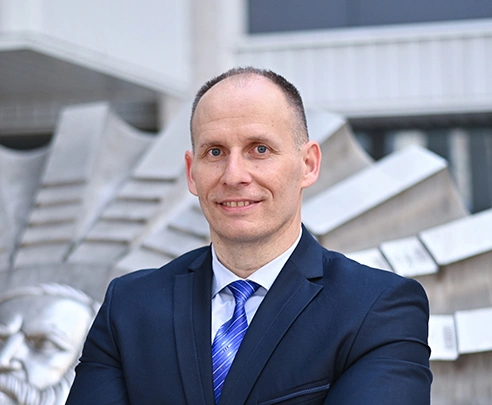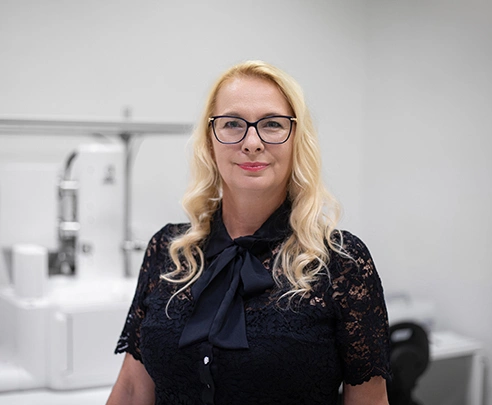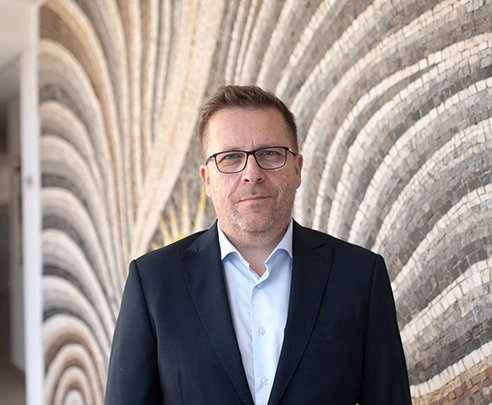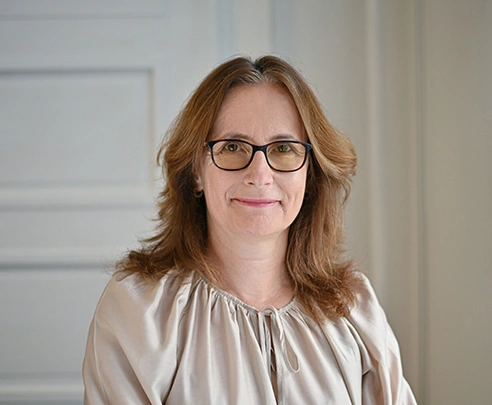The night sky has fascinated him since childhood, and even today, as a renowned astronomer, he still can't take his eyes off it. Prof. RNDr. Juraj Tóth, PhD., is a university lecturer and scientific researcher at the Faculty of Mathematics, Physics and Informatics at Comenius University in Bratislava. He focuses on the study of small bodies in the Solar System, the education of astronomy and astrophysics students, and the popularization of astronomy among the general public. Professor Tóth represents a scientist who has managed to preserve his boyish curiosity and transform it through frontier research into exceptional discoveries.
The fascination with space began with the self-study of a thirteen-year-old boy who read an astronomy encyclopedia, even though he didn’t fully understand it. This persistence and passion now define him as both a scientist and a teacher. After graduating in astronomy and astrophysics from the Faculty of Mathematics, Physics and Informatics at Comenius University in Bratislava, he joined the Astronomical-Geophysical Observatory in Modra, a satellite workplace of his alma mater. In November 1998, just two months after starting work, he observed an extraordinary activity of the Leonid meteor shower. Together with his colleague Tomáš Paulech, they created a full-sky analog photograph that captivated astronomers worldwide. Their four-hour exposure with 150 meteors became the foundation for a new model of astronomical event predictions and was published along with a study in the journal Earth, Moon, and Planets.
In observing and researching small bodies of the Solar System, he found beauty, passion, and his scientific path. His focus includes all objects that are not planets or their moons—especially meteoroids, asteroids, comets, meteors, meteorites, and meteor showers. He was particularly fascinated by meteorites—fragments of Solar System bodies that, upon impact with Earth, provide valuable data about its ancient history.
"Meteorites contain rare information that helps us piece together the origin of the Solar System from 4.5 billion years ago," explains Juraj Tóth. He dedicated his research projects to the search for meteorites. In 2010, during a field expedition in the village of Vyšný Klátov, he found the first fragment of the “Košice” meteorite. It is the first Slovak meteorite with a pedigree—meaning a documented flight path—and the fifteenth such meteorite in the world.
The logical outcome of this research was the systematic monitoring of the sky itself. As the head of the AMOS project (All-sky Meteor Orbit System), Professor Juraj Tóth, along with his collaborators and students, developed and deployed a unique network of 17 autonomous optical systems across nearly all continents. These cameras, with sensitivity comparable to the human eye, automatically monitor the night sky at 20 frames per second with a 180° field of view.
The global reach of the project is impressive—cameras are located not only in Slovakia but also in the Canary Islands, Hawaii, Chile, Australia, Arizona, and South Africa—from prestigious observatories to remote desert regions. AMOS has thus become the only Slovak astronomical instrument with a global network and the only European infrastructure of its kind.
"We needed to cover both the northern and southern hemispheres to map all particle streams and potentially hazardous bodies," explains Professor Tóth, describing the strategic thinking behind the project, which enables not only the tracking and analysis of meteor trajectories, meteorite falls, and satellite reentries, but also the establishment of key collaborations with international partners, including the European Space Agency.
Professor Tóth’s scientific achievements have earned international recognition. He is Vice President of the International Meteor Organization (IMO), a member of the International Astronomical Union (IAU), and Vice President of its Commission F1 for meteors, meteorites, and interplanetary dust, which named asteroid (24976) Jurajtoth after him in 2014. He is listed in the Minor Planet Center as the discoverer or co-discoverer of sixteen minor planets.
In recent years, he has collaborated with former student and young colleague Pavol Matlovič on developing a methodology in a special plasma wind tunnel at the University of Stuttgart. This tunnel simulates the atmospheric entry of meteoroids and allows the study of the behavior of dozens of types of meteoric materials under laboratory conditions.
"This research provides data that can be applied to unknown bodies and used to model their atmospheric disintegration, which is also important for so-called planetary defense," reveals the respected astronomer, who is the author or co-author of 68 publications with 696 citations and an H-index of 16 according to the Web of Science database. His long-term dream is to map meteoroid streams originating from asteroids.
In his free time, Juraj Tóth enjoys spending time with his wife and their three children, hiking, and cycling, while maintaining the same curiosity and enthusiasm that led him to astronomy at the age of thirteen.
As a teacher, he has long combined research with education, going beyond traditional lecturing. He offers students real involvement in observations, field expeditions, and international projects, thanks to which graduates from his program now work at prestigious astronomical institutions in Europe and the USA, with access to the world’s most important observatories.
"I’m happy that my students love what they study and enjoy discovering. Many of those who stay in science reach the frontiers of knowledge, bringing new ideas and challenges. I collaborate with many who have succeeded abroad or returned to Slovakia, and their achievements bring me immense joy," concludes Professor Juraj Tóth. His ability to pass on his passion for space to his students and guide them toward their own success makes him not only an outstanding researcher but also a teacher who has been shaping future generations of Slovak astronomers for a quarter of a century.



